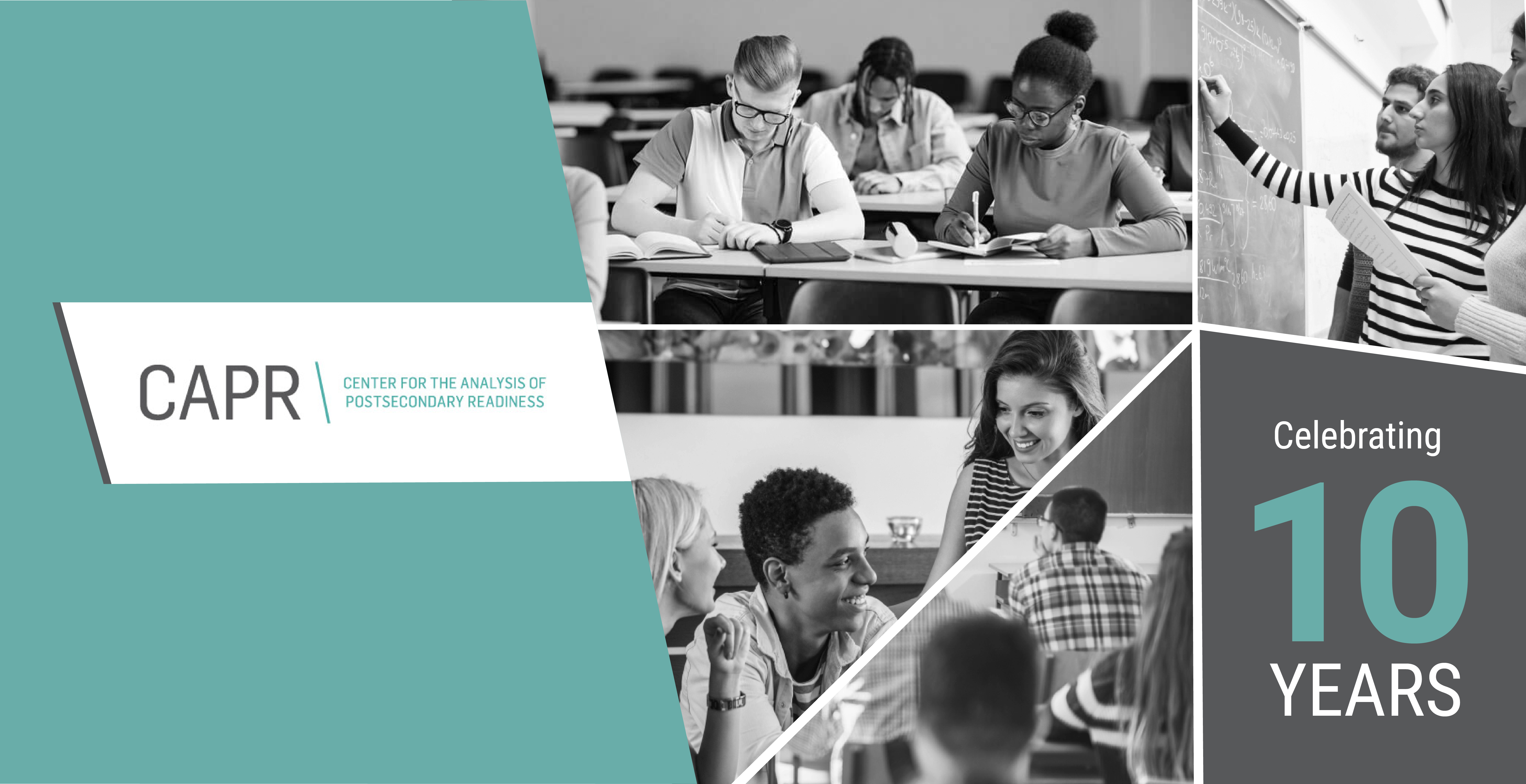Ten Years of CAPR
Since its founding 10 years ago, CAPR has contributed to a transformation in thinking about best practices for developmental education.
How? First by generating rigorous evidence on reformed approaches to assessment and placement and math pathways. Second by creating a hub where developmental education researchers and practitioners gather and share findings and experiences. And third by partnering with systems and institutions to translate the evidence into practice.
To what end? A recent CAPR survey found that 73% of two-year public colleges use indicators of high school performance, which is the cornerstone of an updated assessment system called multiple measures assessment. More than three quarters of two-year colleges offer corequisite developmental courses in English and math, which allow students to take college-level courses with extra support.
As CAPR marks its tenth year, it’s time to reflect on the progress CAPR and the field has made and on the opportunities that lie ahead.
CAPR started in 2014 with a five-year research and development grant from the Institute of Education Sciences (IES) at the U.S. Department of Education that allowed it to document the state of developmental education reform at the time and explore a different future. Today, CAPR has 10 projects underway or completed and work on the books through the end of 2025. Over the years, IES funded additional research and Ascendium Education Group and the Gates Foundation supported new CAPR projects.
CAPR’s original studies—including two large-scale randomized controlled trials (RCTs)—showed that more students deemed to have developmental education needs can complete their math and English requirements, and can complete them faster, when placed directly in those courses and—in the case of math—when the course is tailored to their program of study. An RCT of multiple measures assessment (MMA) compared students who were bumped into college-level courses through MMA with those left in developmental courses. The students bumped up were 7 or 8 percentage points more likely to complete a college-level math or English course within nine terms.
The second RCT looked at math pathways, allowing students to pick a math course that fits with their field of study, such as statistics or quantitative reasoning. An early version of math pathways led to a 5.6 percentage point higher rate of completion of college-level math.
The CAPR research helped make the case for policy reform in states such as California and Texas, where the legislatures mandated reforms to developmental education, and Massachusetts and Virginia, where the higher education systems rolled out reform. A review of more than a decade of research inside and outside of CAPR synthesized five principles for reforming developmental education, including a major lesson of earlier studies that developmental education reform is not enough on its own to help more students graduate.
Though the research gave us a big picture idea of what worked, it also raised important questions about how to implement reforms in a way that reduces disparities in outcomes by race and about what conditions are needed to scale developmental education reforms.
CAPR’s newer studies are allowing researchers to work with college systems to implement what we’ve learned while trying to answer the next generation of questions. In Arkansas and Texas, CAPR researchers have worked alongside system and institutional representatives to strengthen placement policy through MMA. Another study is exploring how to implement multiple developmental reforms, specifically the use of MMA to place students in colleges that use corequisite courses for developmental support. Yet another is looking at how the City University of New York is implementing corequisite courses across two-year and select comprehensive colleges. Each of these studies aims to shed more insights into persistent disparities in outcomes by race and income that continue in developmental education reforms.
Looking forward, CAPR remains committed to building the evidence colleges can use to make the best possible decisions about how to structure and implement developmental education reforms. It also aims to elevate the discussion about effective ways to support students’ academic success, hopefully spurring further innovation among practitioners and policymakers and increasing the number of researchers studying the next set of reforms.
Ten years in, CAPR isn’t done, because the field of dedicated practitioners, policymakers, researchers, and advocates isn’t done in its quest for equitable student success. CAPR looks forward to celebrating this milestone and then getting back to work.

